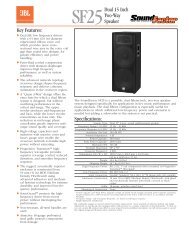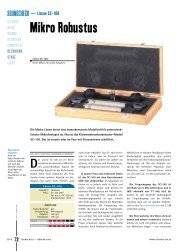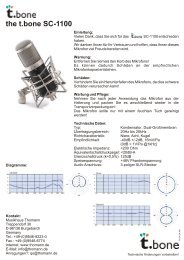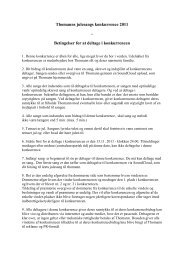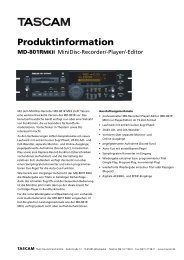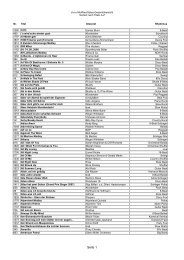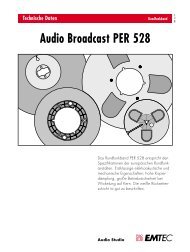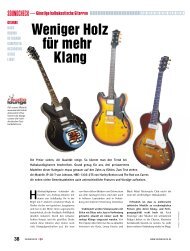Create successful ePaper yourself
Turn your PDF publications into a flip-book with our unique Google optimized e-Paper software.
hard disk. Specifying a lower number of buffers within the cache leads to less<br />
RAM overhead, but also to a higher strain on the hard disk. If you are using a<br />
wide range of velocities, RAM caching will be less effective, as each velocity split<br />
maps to a different sample.<br />
To adjust the amount of cache buffers, double-click the value box, enter a new<br />
value, and press enter. Only do this when BFD is idle!<br />
Maximum Voices<br />
Here, you can set a limit on BFD’s polyphony. If the voice limit is exceeded, BFD<br />
implements an intelligent voice-stealing system, based on the oldest note which is<br />
still playing.<br />
To adjust the number of voices, double-click the value box, enter a new value, and<br />
press enter.<br />
RAM Cache Size<br />
The size of the portion of each sound held in RAM to enable low latency operation<br />
within BFD. This portion plays while BFD cues up the rest of the data from the<br />
hard disk. A bigger value gives the hard drive longer to deliver the data, but is<br />
more demanding on RAM.<br />
This is the amount of each sound played when Preview RAM Audio Only mode is<br />
enabled.<br />
Stream Buffer Size<br />
The size of the buffers of data being streamed off the hard disk for each voice. Bigger<br />
cache sizes are more efficient but are more demanding on RAM.<br />
Maximum Layers<br />
You can limit the amount of velocity layers used by BFD, thereby reducing the<br />
strain on the hard disk and RAM. This can be useful as a preview mode to use<br />
while composing, and increased during mixdown.<br />
Data Path<br />
Clicking on this box allows you to specify a new BFD data path.<br />
55






